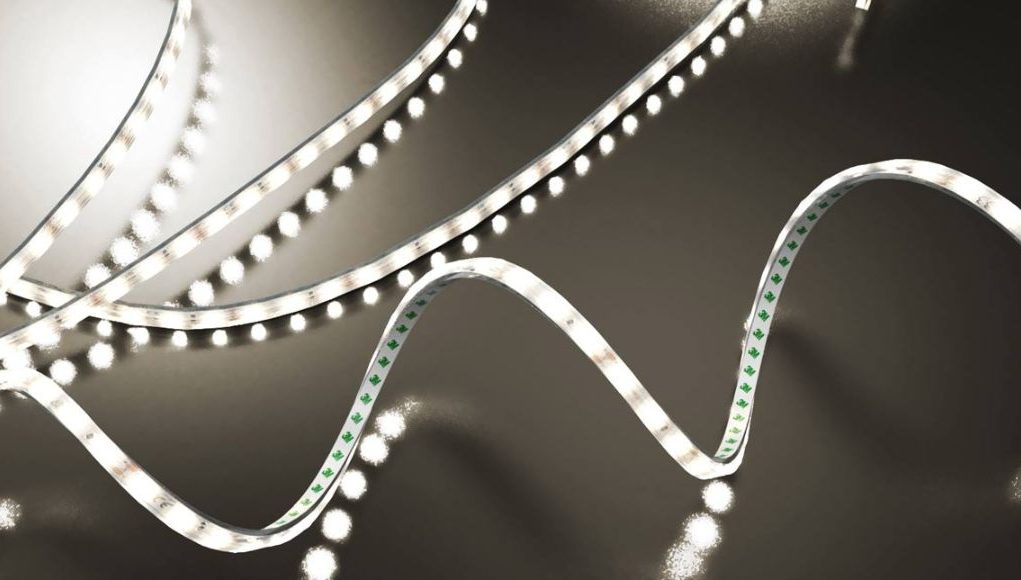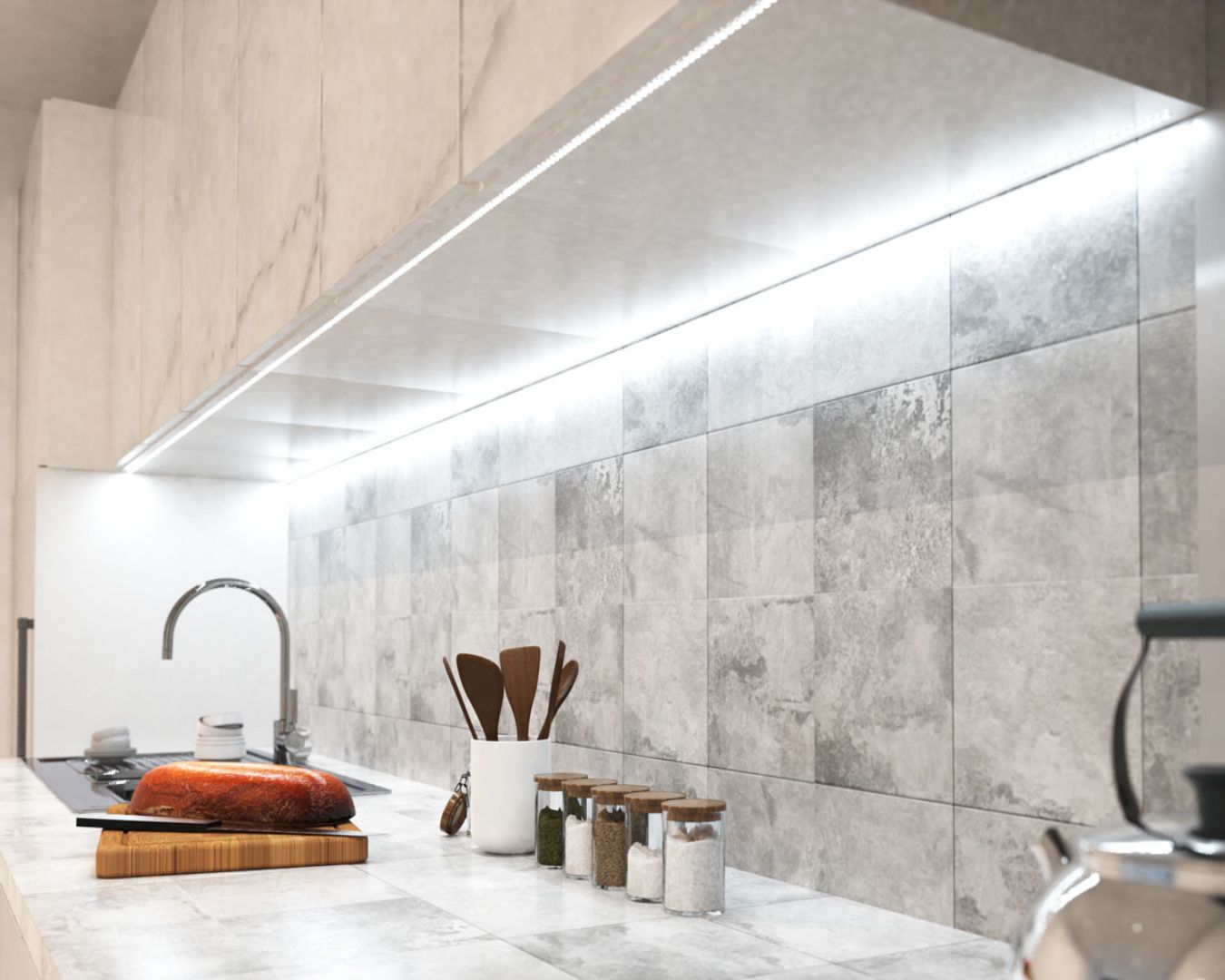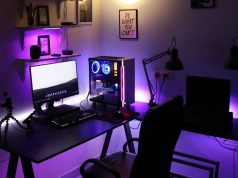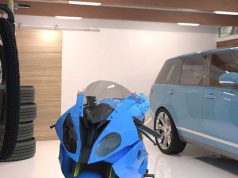Power Up Your Project Right: Calculating LED Strip Light Requirements in the UK
Getting the power right for your LED strip lights is crucial if you want a safe, efficient setup that works reliably over time—especially in the UK. If the power supply is weak, your lights might flicker, overheat, or stop working altogether.
Get a power supply that’s too high, and you’re wasting energy and possibly risking safety issues. Plus, sticking to the proper power limits helps you stay on the right side of UK wiring regulations, which we should all do.
A quick formula to calculate the required power for LED strip lights can save you hassle, energy, and money in the future. That’s why we’re sharing a step-by-step method for calculating the correct power supply (driver) wattage for your LED strip light projects in the UK.
DIY Basics: Key Electrical Terms You Need to Know
Voltage (V)
The electrical potential difference. Most LED strip lights operate on low voltage (typically 12v or 24v DC). DC stands for “Direct Current,” which refers to an electrical current that flows in one direction. Always use a power supply that matches the voltage of your LED strips.
Current (A or Amps)
The rate of flow of electrical charge. Often specified per metre of LED strip.
Power (W or Watts)
The rate at which electrical energy is transferred or used. Calculated as Voltage (V) x Current (A). Your power supply must match or exceed this rate.
Watts per Metre (W/m)
The power consumption of a specific type of LED strip for every metre of its length. This is usually provided in the product specifications.
Your DIY Formula: Calculating the Right Power Supply Wattage
You’re basically a pro at this point, knowing key electrical terms and all that. Now it’s time to do some math! Exciting!
Step 1: Determine the Voltage of Your LED Strip Lights
Check the product specifications of your LED strip lights (usually printed on the strip or packaging). Note whether they are 12v or 24v. There should be no voltage rating other than these two.
Step 2: Find the Watts per Metre (W/m) of Your LED Strip Lights
Check product specifications for this information as well. It should be clearly stated on the packaging or data sheet that comes with it (if available). Keep a mental note of the watts per metre or write it where you’re doing the equation.
Step 3: Measure the Total Length of LED Strip Lights You Will Be Using
Use a measuring tape to determine the total length of LED strip lights you plan to connect to a single power supply. Take into account uneven surfaces and corners when measuring your LED strips. Individual strips joined together by connectors will add to the total wattage.
Step 4: Calculate the Total Wattage Required
Use this formula:
Total Wattage (W) = Watts per Metre (W/m) x Total Length (m)
If you have 5 metres of LED strip lights that consume 9.6W/m, then
Total wattage = 9.6W/m x 5m = 48W.
Step 5: Add a Safety Margin (Crucial for Reliability in the UK)
It’s always recommended to choose a power supply with a wattage rating that is 10% to 20% higher than your calculated total wattage. This prevents the power supply from running at its maximum capacity and keeps it safe from sudden power surges, which can lead to overheating and premature failure of the driver and LED components.
So, for the given example:
For a calculated 48w requirement, a power supply with a rating of at least 53w (48w + 10%) or ideally 60w (offering more headroom) would be a good choice.
The formula for calculating LED strip power requirements is easy to remember. Just remember to add 10% to 20% always.
DIY Tips: Factors That Can Influence Power Requirements
Multiple Runs of LED Strips
If you’re using one power supply to run several separate strips of LED lights simultaneously, just add up the wattage of each strip. That total tells you how powerful your power supply needs to be.
Voltage Drop (Especially for Longer Runs)
Longer runs of LED strips might cause voltage drops to occur the longer the run gets. This can affect the brightness and performance of your LED strips, causing flickering or dimming. Consider using a higher voltage system (24v instead of 12v for longer runs) or adding power supplies at multiple points in your layout. This doesn’t change the total wattage calculation but might influence your system design. This will also depend on the power outlets available in the space.
Controllers and Dimmers
Always check your controllers and dimmers. While the controller usually consumes minimal power, ensure your power supply has enough capacity for the LED strips and any connected controllers, especially if it draws significant power.
Future Expansion
If you anticipate adding more LED strip lights to your system, consider choosing a power supply with a higher wattage rating. Of course, you can always use a different power supply for the additional strip lights you’ll add.
Selecting Your Power Source: Matching Your Calculations
Constant Voltage vs. Constant Current
Constant voltage (CV) means that the power supply maintains a set voltage while the current will fluctuate depending on resistance. On the other hand, Constant Current (CC) means the opposite: the power supply maintains a set current, and the voltage adjusts according to the current.
Most LED strip lights for DIY use are constant voltage (typically 12v or 24v). Ensure your power supply is a constant voltage (CV) type with the correct voltage output.
IP Rating
Most power supplies are IP20-rated, suitable for indoor applications. However, if your power supply is in a damp or outdoor environment in the UK, ensure it has a high IP rating (at least IP65). Leading online LED suppliers like Simple Lighting offer LED drivers rated IP67, perfect for outdoor LED strip lighting projects.
Safety Certifications
Always choose power supplies that comply with UK safety standards and carry relevant certifications. Check for CE and UKCA markings. These indicate that an LED power supply (driver) meets EU health, safety, and environmental protection standards.
DIY Example: Powering Under-Cabinet LED Strips
Say you wanted to install an LED strip light from Simple Lighting for your under-cabinet lighting project.
The strip is rated 5W/m. You plan to have two runs of the same length, each 2.4 meters long, for a total length of 4.8 meters.
Take the same formula we used above:
Total Wattage (W) = Watts per Metre (W/m) x Total Length (m)
Total Wattage (W) = 5W/m x 4.8m = 24W
Then we add the 20% safety margin, which should give us 28.8w. Any 30w LED drivers should be the ideal power supply for this example.
Power Your Lighting Project Correctly! Browse Our Range of LED Power Supplies
Check out Simple Lighting’s wide selection of LED strips, drivers, and compatible controllers for your next LED strip lighting project. Our power supplies range from 8w up to 240w! So, no matter how big or small your project is, Small Lighting has your back with high-quality lighting supplies. Head on over to our website and browse our collection today!
Get the Watts Right: Ensuring Optimal Performance for Your LED Strip Lights
Accurate power calculation is crucial for a successful, safe, and regulation-compliant LED strip light installation when you’re in the UK. Using the correct power supply for your LED strips ensures optimal performance and longevity of your lights. You only need the strip’s watts per meter (W/m) rating and the total length of your LED strip run to calculate the total wattage of your project. Always add a 10% to 20% safety margin when selecting your power supply.
As always, prioritise safety when installing your LED strip lights. If unsure, get the help of a qualified electrician.















